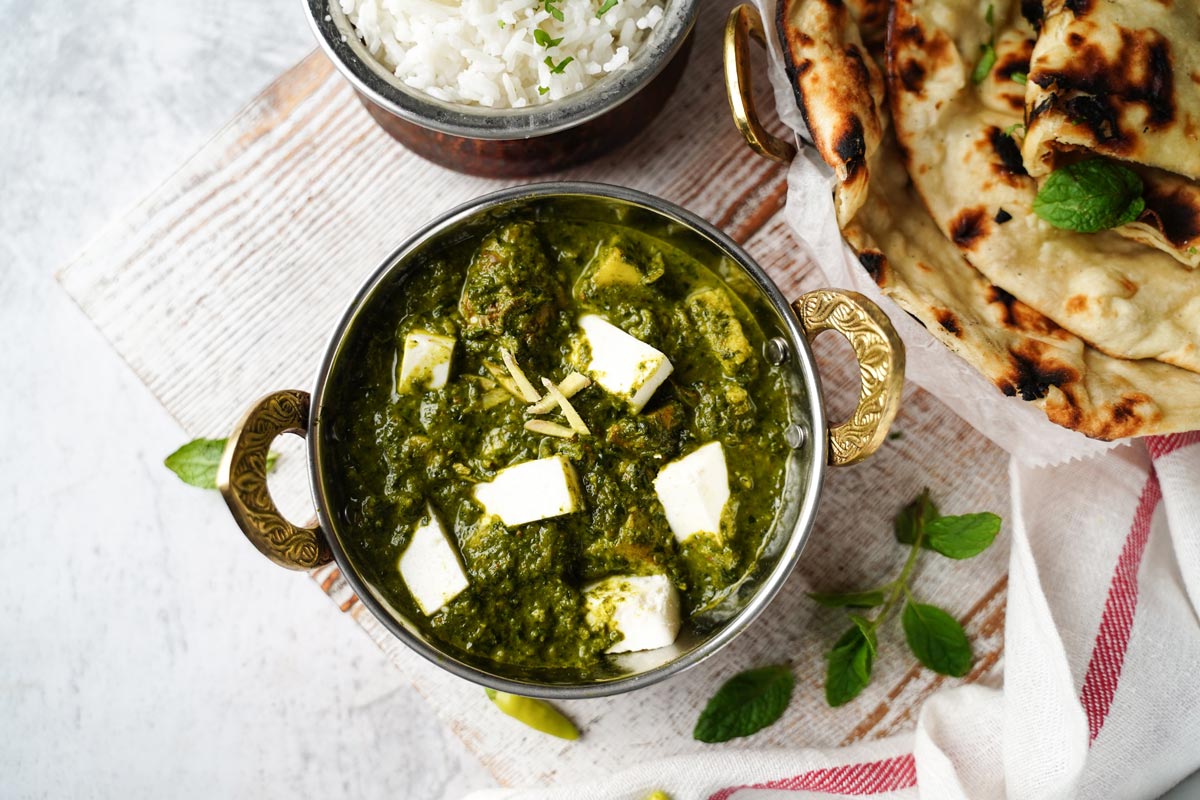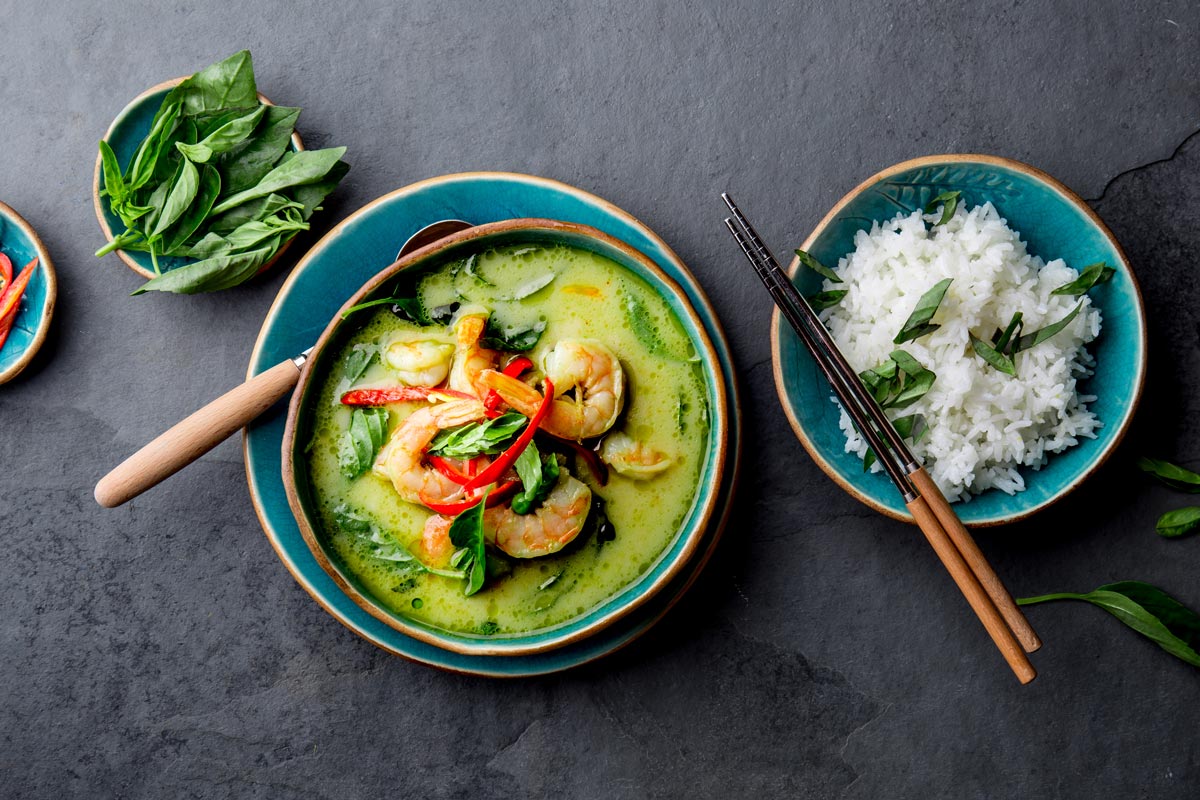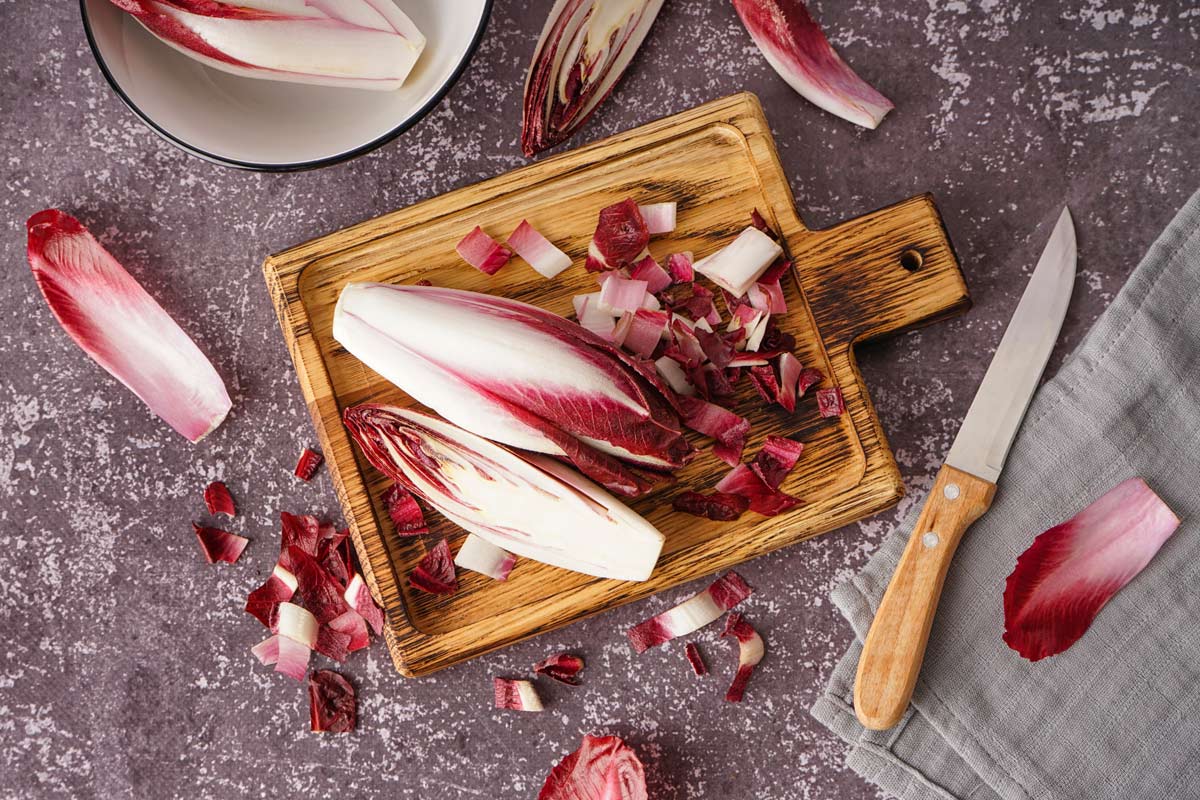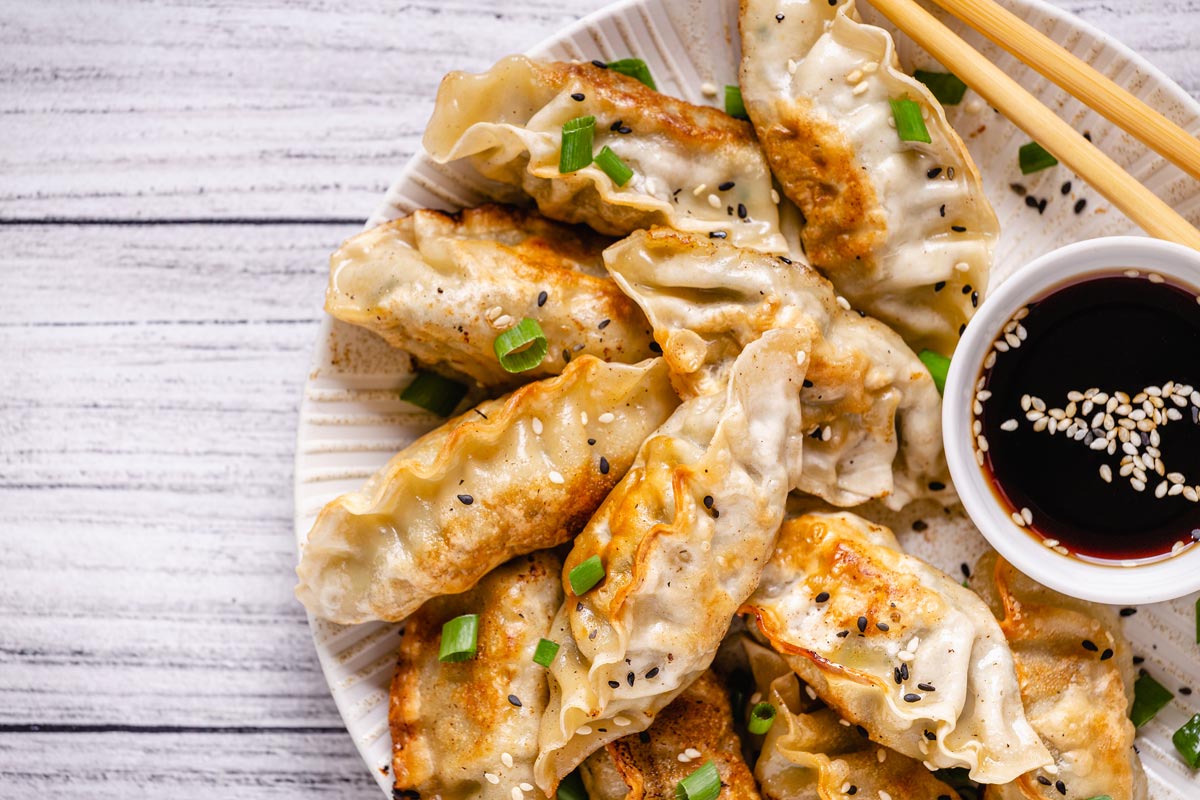Immigrants from Northern India have popularized dishes like this one in Australian cities. The Sanskrit word saag means “greens”—not just spinach (known as palak). Paneer is a firm cheese with a high melting point made from milk curdled with lemon juice or another acid. If you cannot find it, halloumi, feta, or queso fresco make good stand-ins.
Ingredients
- 1 pound baby spinach, cleaned of any sand or grit
- Coarse salt (kosher or sea)
- 3 tablespoons extra virgin olive oil, divided use
- 8 ounces paneer, halloumi, feta (drained), or queso fresco
- 1 medium onion, peeled and diced
- 1 to 2 serrano chiles, stemmed, seeded, and finely diced
- 2 cloves garlic, peeled and minced 2 teaspoons grated fresh ginger
- 1 teaspoon ground cumin
- 1/2 teaspoon ground turmeric
- 1/2 teaspoon pure chili powder, or more to taste
- 1 tablespoon fresh lemon juice
- 1/4 cup heavy cream
- Basmati rice and/or naan, for serving
Directions
Step 1
Bring a pot of salted water to a boil. Add the spinach and cook for 2 minutes. Drain the spinach, reserving a few tablespoons of the cooking liquid. Place the spinach and 2 or 3 tablespoons of the reserved cooking liquid in the jar of a blender or the bowl of a food processor and process until the mixture is coarsely pureed. Set aside.
Step 2
Cut the cheese into 1-inch cubes. (If the cheese is damp, dry it on paper towels first.) Heat a large nonstick skillet over medium-high heat. Add 2 tablespoons of olive oil as well as the cheese cubes. Sauté the cheese in a single layer (work in batches, if necessary), until golden brown, about 1 minute per side. Transfer to paper towels (again, in a single layer).
Step 3
Add an additional tablespoon of olive oil to the oil that remains in the skillet. Add the onion and chile and sauté over medium heat until soft, about 3
minutes. Stir in the garlic, ginger, cumin, turmeric, and chili powder and cook for 1 minute. Stir in the reserved spinach mixture and the cheese and heat gently. Stir in the lemon juice and cream and add salt to taste. Serve warm with basmati rice and/or naan.
Serves 2 to 3 as a main course




